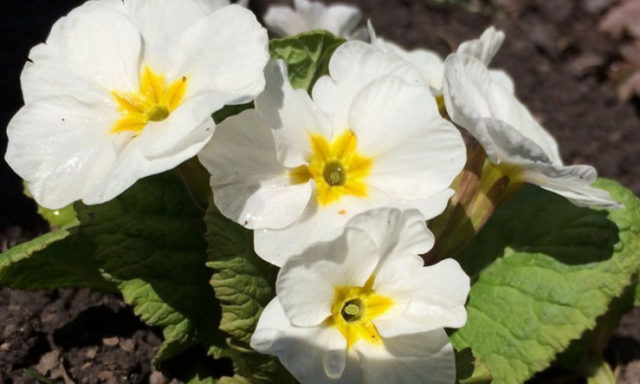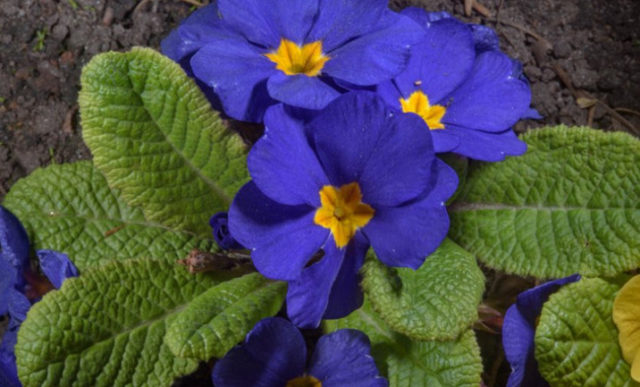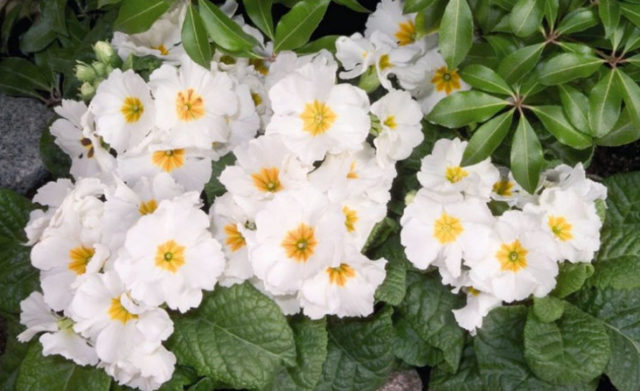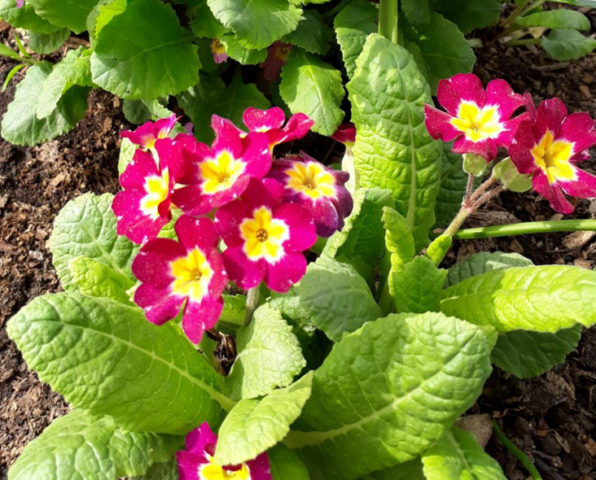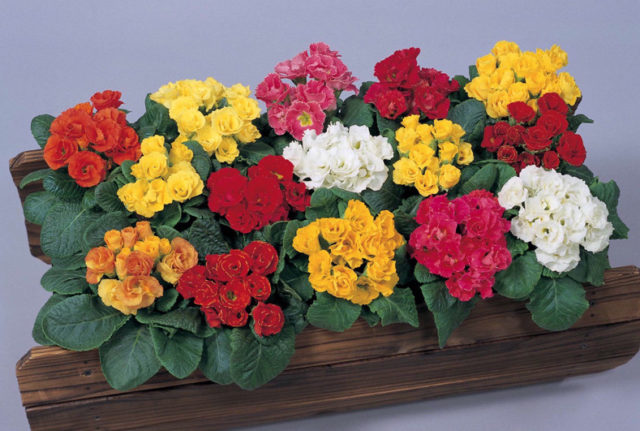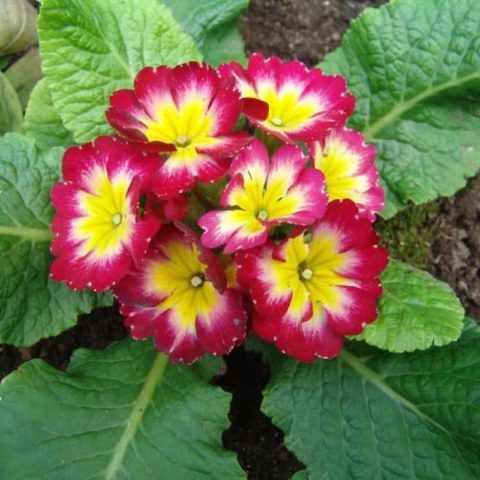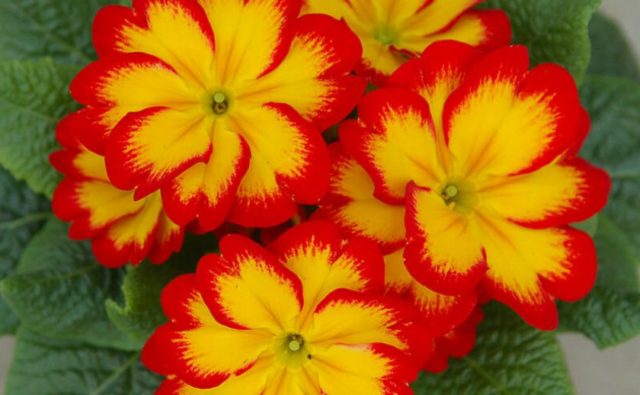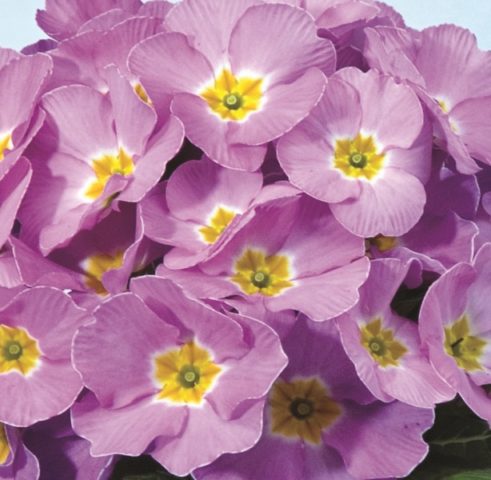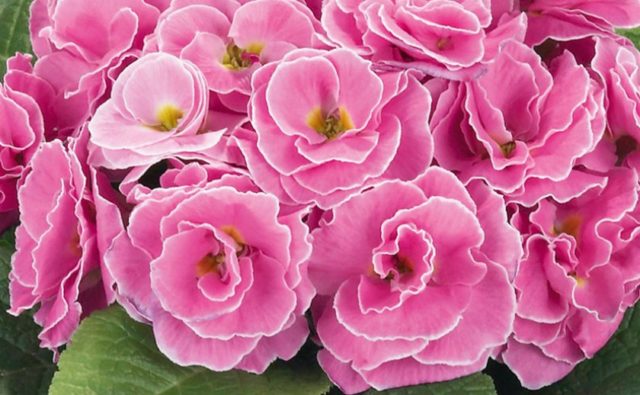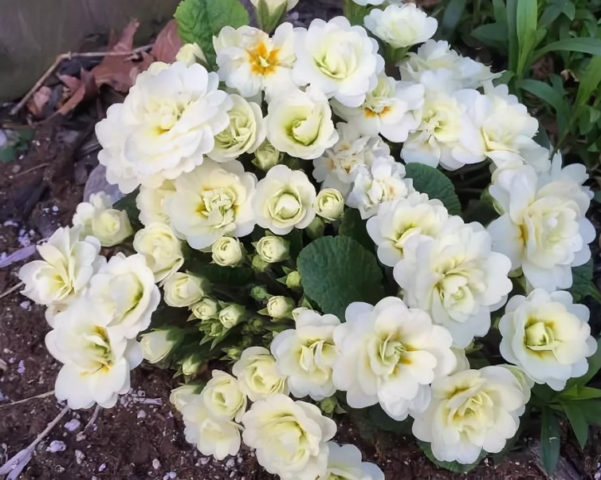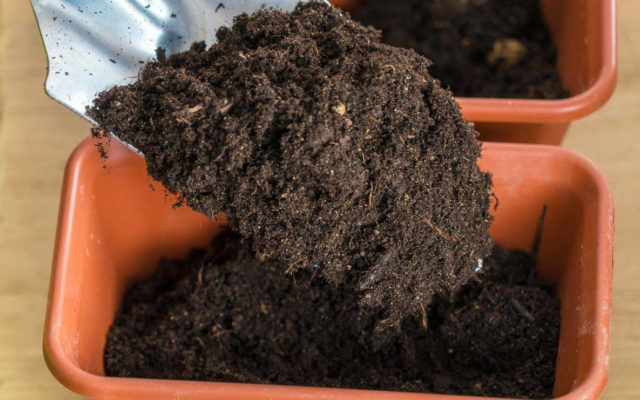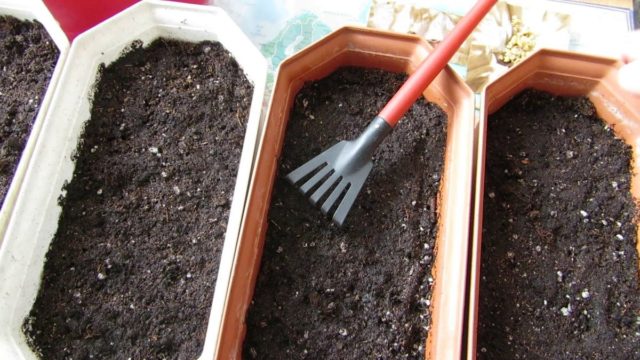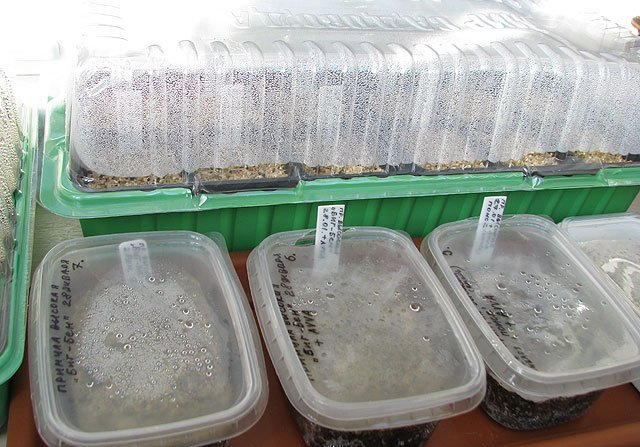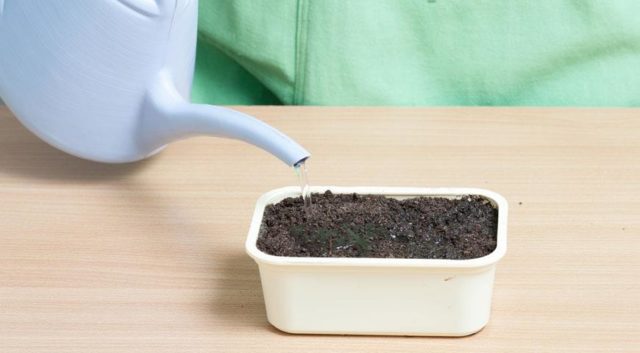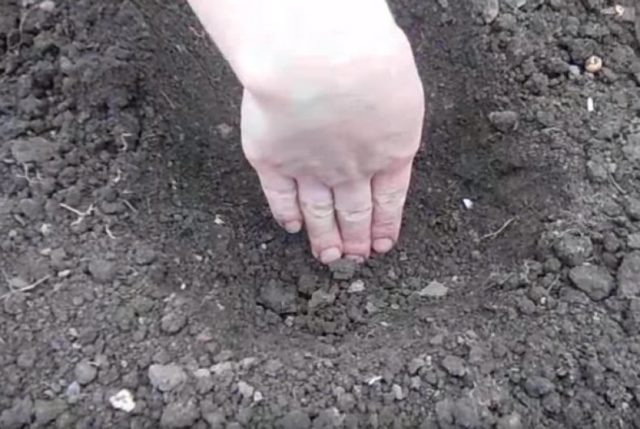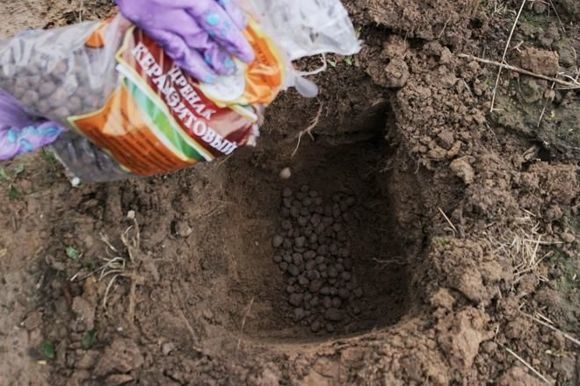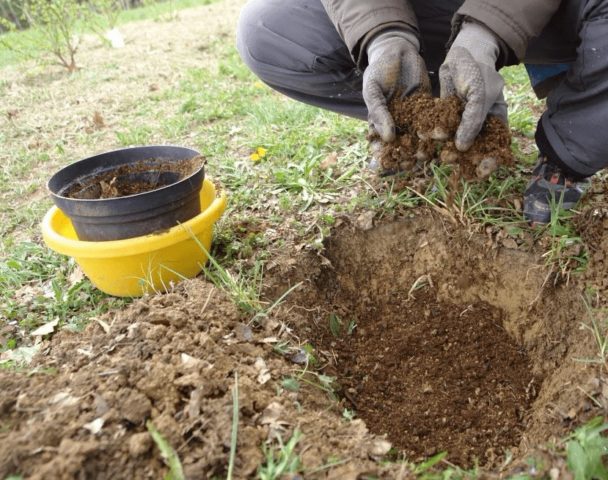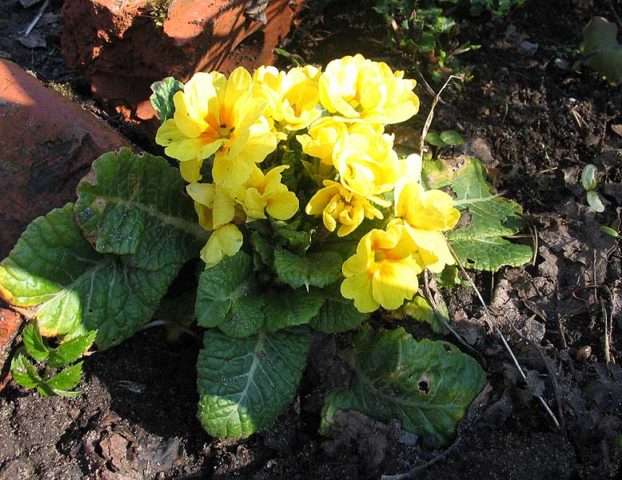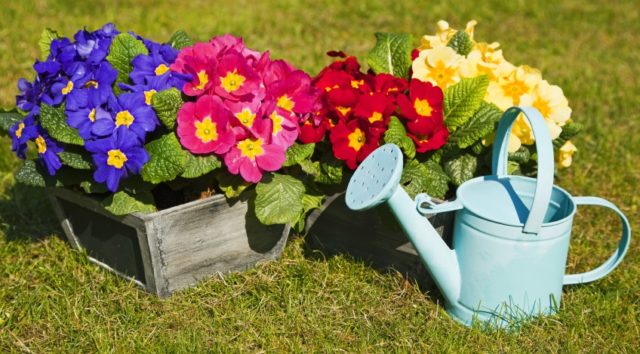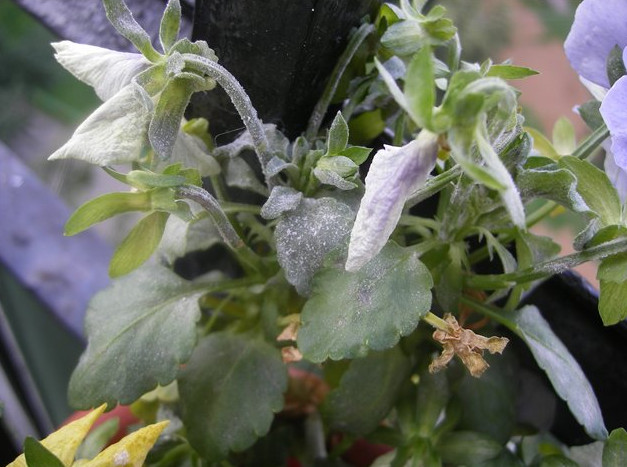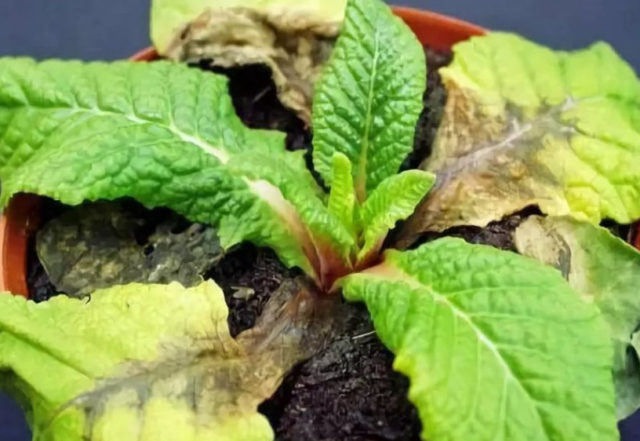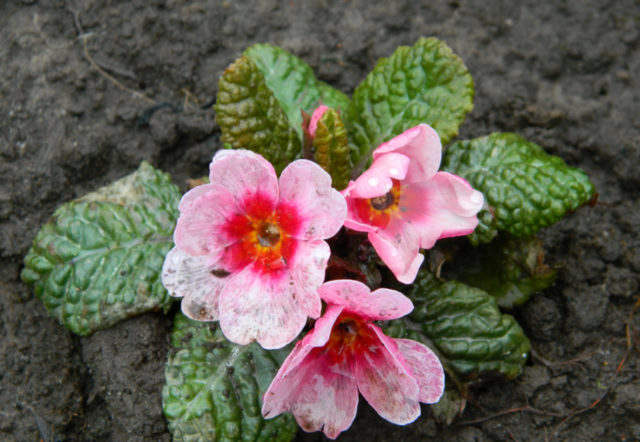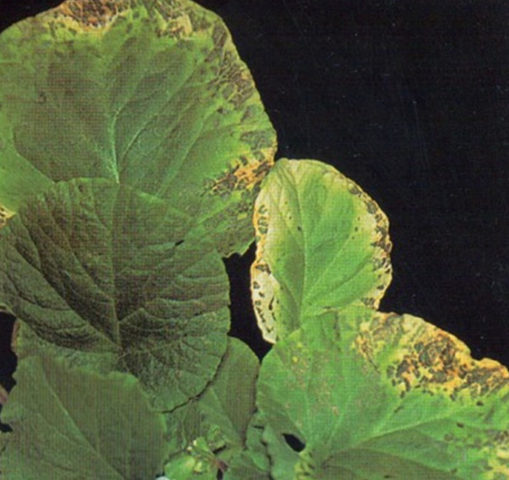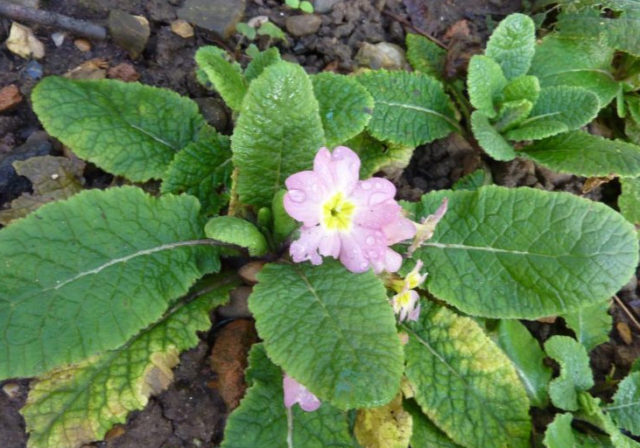Content
Primrose stemless, despite the external fragility, is able to withstand temperature extremes, slight frosts, which are possible in early spring. Attracted in this unusual plant is not only a presentable appearance, but also a relative unpretentiousness in growing.
Description of stemless primrose
Under natural conditions, the flower grows in the shady forests of Eurasia and North America. It is also found on the slopes of the Alps and the Mediterranean coast. The plant prefers to be in a humid and shady area. The flowering phase of stemless primrose occurs at the beginning of spring and lasts until mid-summer. Petal renewal is observed every 3-8 weeks.
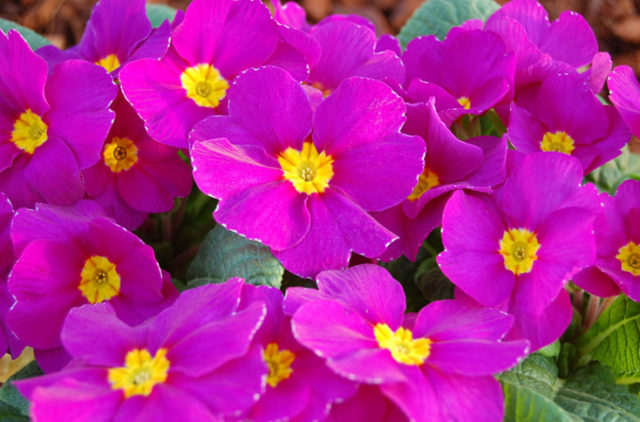
Primroses are distinguished by color and structure of inflorescences
The primrose reaches a height of only 30-50 cm. A dense umbrella is formed on the peduncle, surrounded by corollas of bright petals, their number is from 5 pieces. The color can be very diverse, the tips are either sharp or rounded. They are 6-8 cm in diameter. The core color is mainly yellow. The stemless primrose is decorated with green, with pronounced veins, leaf plates.
Hybrids and varieties of stemless primrose
The following are very popular with plant breeders:
- Virginia. Its distinctive feature is white flowers with a light yellow throat. A photo of stemless primrose conveys all its beauty well.
- Celeroi. It has a very attractive appearance, it has blue flowers with a yellow throat.
- Giga White. The snow-white flowers of stemless primrose will not leave anyone indifferent.
- Primula stemless Potsdam giant. In this perennial, flowers are large in size and high decorative qualities. The colors are very diverse, the middle is yellow. The leaves of the plant are located below the inflorescences.
- Terry primrose of the Rosanna series. The plant differs in the presence of petals with wavy edges. Due to this, the primrose terry is formed, the middle is practically invisible. These varieties lack both pistil and stamens. The flower can be propagated exclusively in a vegetative way.
- A two-color version of the Pioneer series. The color of the flowers is pink, there are various shades, the middle is bright yellow, the border is purple. But there are options for purple and orange. Primrose can grow without transplants for 5-6 years.
- Alaska. The variety is of two types: with a red or blue border, and also yellow with the same throat.
- Example F. This hybrid has 14 shades. The biennial flower can be used both as a pot culture and as a plant for early spring forcing.
- Palazzo series. Terry primrose variety is presented in pink, red-yellow and burgundy-yellow.
- Dawn Ansell. The flowers are green-yellow in color and densely doubled.
- Captain Blood. Stably blooming stemless primrose forms blue double flowers.
- Meteor, Danova Bicolor. These varieties surprise with their large size, their second name is "pluck out the eye".
Application in landscape design
Primrose stemless, with over 400 varieties, creates serious competition for many bulbous. It is actively used by landscape designers. With a successful combination, the flowerbed with it will delight with its appearance for 4 months.The main advantage of this plant is that it is undemanding to growing conditions and care.
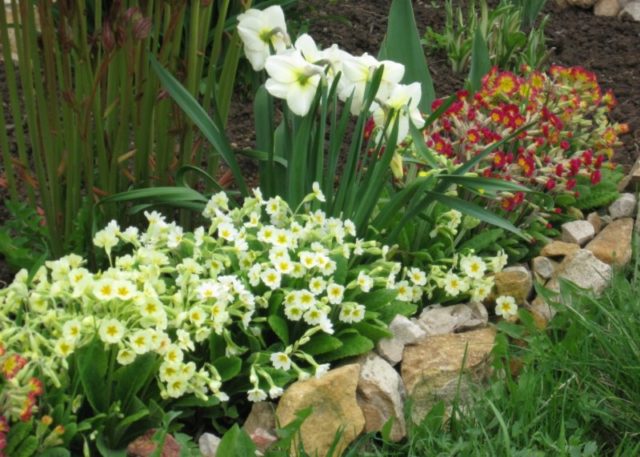
Primrose goes well with daffodils, irises, bulbs
These amazing flowers look especially impressive in areas with fountains, a river and a lake. They are planted at the edge of the reservoir, where, reflected in the water, a picturesque picture is created. It is worth combining primrose with water lilies, they harmonize very well with their purple leaves. Can also be planted next to bulbous plants, grasses, irises and ferns.
Breeding features
It is possible to successfully breed primrose by seed and vegetative method. If the conditions for growing flowers in the garden are favorable, then self-seeding is possible. The simplest breeding method is to divide the plant into rosettes with roots. The optimal time for this procedure is early spring, when the snow melts. But they can also be bred during the flowering period, before the arrival of the summer heat.
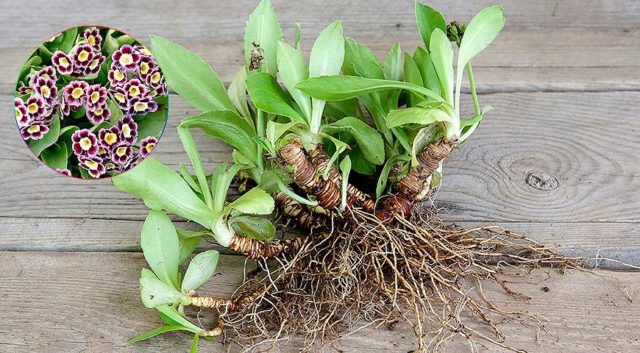
It is undesirable to divide the plant in autumn, in a snowless winter there is a high risk of death of the "delenok"
In order for a flower bed with a stemless primrose to have a luxurious look, with a frequency of 1 every 3-4 years, either division with a transplant to a new place is performed, or the soil is changed.
Planting and caring for a stemless primrose
Growing stemless primrose seeds "Potsdam giants" or any other variety is possible even for a novice gardener. The seed has good germination, but its quality varietal characteristics can be lost if the seeds are harvested from their flowers. But even in this case, the flowers are obtained with new interesting shades.
Growing stemless primrose from seeds at home
To obtain high-quality stemless primrose seedlings, you must adhere to the following recommendations for sowing seeds and caring for them:
- Priming. For sowing seeds of stemless primrose, a ready-made soil substrate from a flower shop is suitable. You can also use forest soil, but you cannot use it from the garden, it is heavy, without nutrients.
- Capacity. There is no need for a large container, the main thing is that there is a lid. The height of the container should be 5-7 cm. If it is absent, then you can use glass and film.
- Filling the container. First, pebbles, gravel, small stones, brick breakage should be laid on the bottom, and only then light and nutritious soil. After that, the container is taken out into the street or placed in the refrigerator for a couple of hours to allow the substrate to cool. If there is snow, then it is laid on the ground in a container, and then sprinkled with another layer of soil, no more than 2 cm thick. Thanks to such manipulations, the soil does not quickly heat up, the crops are much more uniform. It is not worth compacting the earth, otherwise there will be no shoots.
- Stratification. The container with seeds is covered with a lid and placed in a refrigerator for 2-4 weeks, temperature is -10 ° C. Then they are left in a cool dark place.
- Seedling care. If there are two leaves on the plant, they are seated, trying not to damage their root system. Divided small seedlings are planted in a seedling box by making holes in the soil with a toothpick. The distance between the shoots is from 5 cm. The primrose is watered with slightly chilled water, in a thin stream from the watering can. It is often not worth feeding the flower with nitrogen fertilizers; it is better to use more potash and phosphorus compounds. The temperature regime in the room must be at least +17 ° C.
Sowing work can be carried out from February to October, depending on the region, the dates change:
- In the suburbs - early March.
- In the Urals - mid-March.
- In Siberia - late March-early April.
- In the southern regions - the end of winter.
Transfer to the ground
It is recommended to plant a primrose either in lighted areas of the garden, or in partial shade. If the place is in direct sunlight, the leaves of the plant will dry out, the flowers will wither. It is advisable to choose darkened places for growing primrose.
To prevent the bush from getting sick, the soil must be fertile and sufficiently loosened. Waterlogging should be excluded, water should not stagnate in the place where the flower grows, otherwise it will rot.
Algorithm for transplanting primrose into the ground:
- Make holes in the prepared area.
- Lay the drainage at the bottom in the form of a brick fight.
- Sprinkle with soil.
- Place a stemless primrose sapling in the center and dig in.
- Moisten the soil.
Follow-up care
In order for a flower bed with primrose to please as long as possible, the planting site should always be clean, without weeds. The soil under the stemless flower should be loosened after each irrigation, so the roots will not experience oxygen starvation.
The feeding procedure is sufficient to carry out once every 10 days, starting from the moment the leaves appear on the primrose and until the end of the flowering phase. Mineral compositions are added diluted with water, using a double dosage.
Wintering
To shelter primrose bushes, pre-dried straw, foliage or spruce branches are used. The thickness of the layer should be 7-10 cm. If the weather permits, and the winter is expected to be warm, then the shelter for stemless primrose can not be used. When the snow melts, you need to check that an ice crust does not appear on the plant, otherwise the primrose will rot.
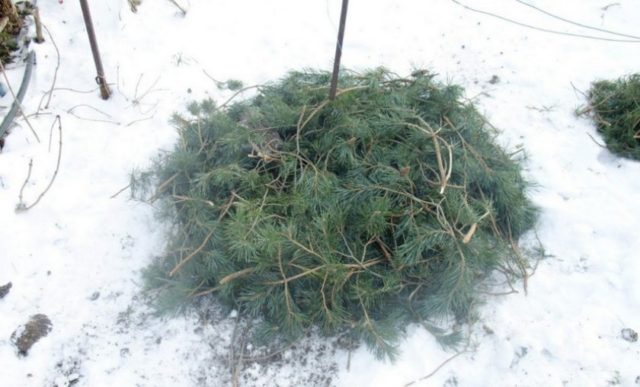
In spring, additional shelter should be removed as soon as the threat of return frosts has passed.
Transfer
To maintain the stemless variety in a healthy and beautiful form, a transplant is made every 3-4 years. At this time, it is good to divide the primrose in order to get new specimens.
Pests and diseases
Most often, primrose bushes are subject to the following diseases:
- powdery mildew - due to high humidity;
- gray rot - due to excessive moisture / nitrogen in the soil;
- ramulariosis - due to waterlogging;
- vascular or tracheomycotic wilting (fungus of the genus Fusarium, Verticillus);
- anthracnose;
- ascochitosis;
- septoria.
From harmful insects, primrose can be damaged by:
- caterpillar;
- aphid;
- mite;
- whitefly;
- slugs.
In order to prevent the appearance of parasites, the flowers should be regularly inspected, fed and rid of the nocturnal seed lovers - pests. Antitlin, Actellik and tobacco dust help well against aphids on primrose.
Conclusion
Primrose stemless does not require special growing conditions, it is unpretentious and beautiful. Her flowers instantly attract attention. Due to its high decorativeness, it can be safely combined with other plants in the garden. The main thing is not to overmoisten the soil and not to overfeed the plantings.
